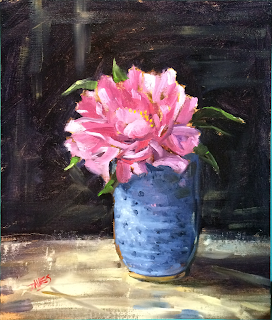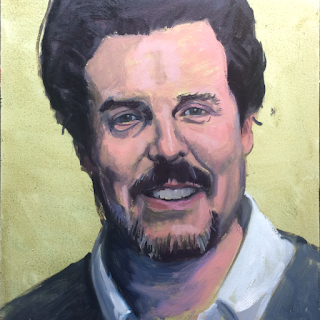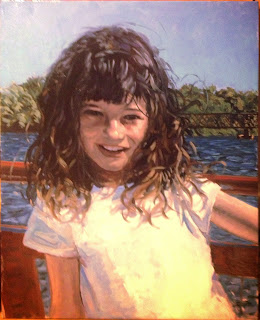Direct Painting--Japanese Tree Peony

When people think of the how of painting, the direct method of painting is what many people assume most painters use, and this is largely the case for most abstract and much of realist painting. The indirect method is currently making a comeback, and I may discuss it in another post. For now, the direct method, which seems simple, but if done well, is surprisingly complicated. To start, you may or may not have an underdrawing, tone, or underpainting, but you will have a series of brush strokes that are as precise as possible. The paint will be mixed to the exact hue and value--shade, tint, tone--lifted from the palette with the exact size and shape brush needed for the expected mark and deliberately applied by dragging the color on the tip of the brush, not the bristles across the desired area. The artist may twist the brush, press to fan it out, or manipulate it in some other way to get the exact brush shape desired to make the exact mark. If the mark is incorrect or inarticulate, i...










